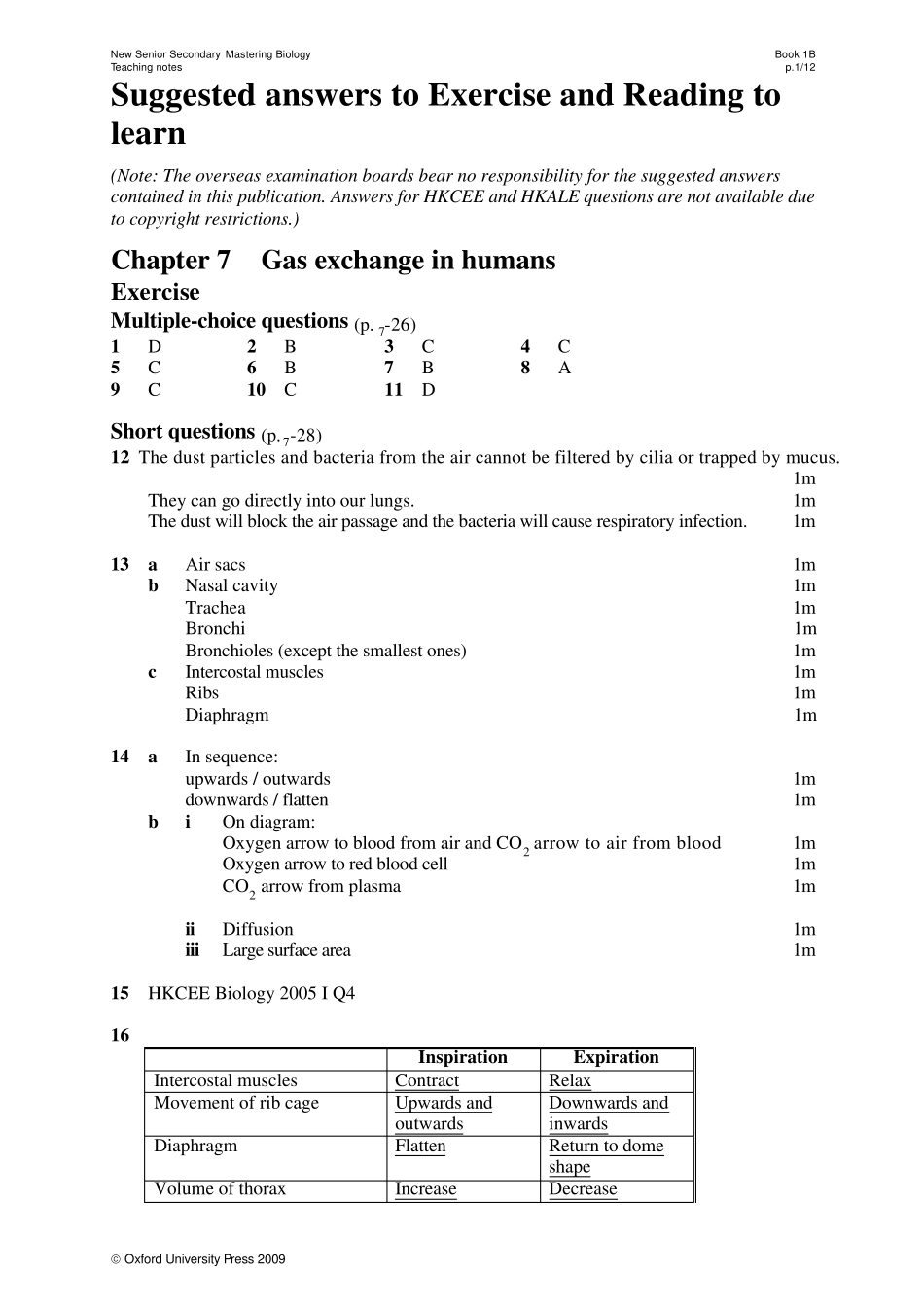New Senior Secondary Mastering Biology Book 1B Teaching notes p.1/12 Oxford University Press 2009 Suggested answers to Exercise and Reading to learn (Note: The overseas examination boards bear no responsibility for the suggested answers contained in this publication. Answers for HKCEE and HKALE questions are not available due to copyright restrictions.) Chapter 7 Gas exchange in humans Exercise Multiple-choice questions (p. 7-26) 1 D 2 B 3 C 4 C 5 C 6 B 7 B 8 A 9 C 10 C 11 D Short questions (p. 7-28) 12 The dust particles and bacteria from the air cannot be filtered by cilia or trapped by mucus. 1m They can go directly into our lungs. 1m The dust will block the air passage and the bacteria will cause respiratory infection. 1m 13 a Air sacs 1m b Nasal cavity 1m Trachea 1m Bronchi 1m Bronchioles (except the smallest ones) 1m c Intercostal muscles 1m Ribs 1m Diaphragm 1m 14 a In sequence: upwards / outwards 1m downwards / flatten 1m b i On diagram: Oxygen arrow to blood from air and CO2 arrow to air from blood 1m Oxygen arrow to red blood cell 1m CO2 arrow from plasma 1m ii Diffusion 1m iii Large surface area 1m 15 HKCEE Biology 2005 I Q4 16 Inspiration Expiration Intercostal muscles Contract Relax Movement of rib cage Upwards and outwards Downwards and inwards Diaphragm Flatten Return to dome shape Volume of thorax Increase Decrease New Senior Secondary Mastering Biology Book 1B Teaching notes p.2/12 Oxford University Press 2009 Pressure in thorax Decrease Increase Direction of movement of air Into the lungs Out of the lungs (1m for both correct on each row, 1m x 6) Stru ctu red qu estions (p.7-29) 17 a B and C 2m Mucus traps dust. 1m Cilia beat mucus up the t...


